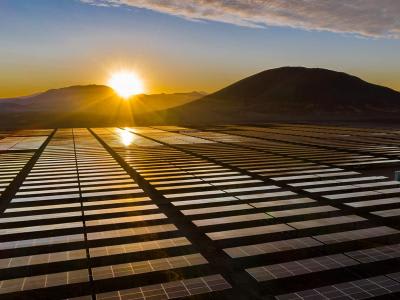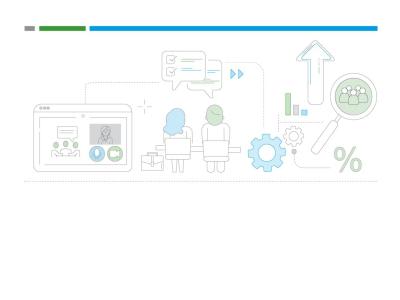Global warming has become a topical issue across the world. The dying of marine life in the sea and dramatic temperature changes across the globe cannot go unnoticed. A lot has to be done to protect Mother Earth. Tax incentives are welcomed by companies as this will boost their after tax profits while at the same time help to save the environment.
This article will focus on the Section 12B, one of the tax incentives that have been put in place to promote renewable energy in South Africa. From 1 January 2016, Section 12B was further amended to include accelerated depreciation for renewable energy. This has been welcomed by manufacturing companies.
New Section 12B
Description of the Allowance
The allowance falls under the capital allowances for property, plant and equipment. It was added in the 2015 tax year as an incentive for the use of solar powered machinery rather than the use of traditional fossil energy. This allowance can only be claimed for the following assets:
- Farming plant and equipment
- Assets used to produce bio-diesel or bio-ethanol
- Assets used by the taxpayer for the purpose of his trade in the generation of electricity from:
- wind power
- solar energy
- photovoltaic (PV) solar energy of more than 1 megawatt
- photovoltaic solar energy not exceeding 1 megawatt
- concentrated solar energy
- Hydro power of not more than 30 megawatts
- Biomass which includes organic wastes which comprise of gas or plant materials
In addition to the specific assets above, the improvements to these assets as well as any foundation or supporting structure are also subject to the allowance.
For foundations or supporting structures to qualify for the deduction, the following must be satisfied:
- The asset concerned must be mounted or fixed to the supporting structure or the foundation
- The supporting structure should be an integral part of the asset
- It was brought into use on or after 1 January 2013
- The useful life of the foundation or supporting structure is limited to the useful life of the asset mounted or fixed to it
How much can a tax payer deduct in terms of the following?
For all photovoltaic assets (definition: photovoltaic assets use solar cells to convert energy from the sun) that do not exceed 1 megawatt, a 100% deduction of the cost of the asset will be allowed if the asset was brought into use on or after January 2016. Included is embedded solar PV renewable energy for self-consumption with 1 megawatts generation capacity. This is supported by the government because of their energy self-sufficiency which reduces the use of electricity on the national electricity grid.
For all assets, apart from the one mentioned above, the tax payer must be the owner of the asset or have purchased it under an instalment credit agreement. When the asset is purchased in terms of an instalment credit agreement the seller may not claim the allowance.
All other qualifying assets will qualify for an allowance over a 3 year period: 50%, 30% and 20% respectively. This allowance is not apportioned in the first year of the write off but fully claimable in the relevant year of assessment. The above allowance is only available when the asset is brought into use for the first time by the taxpayer. The asset can be new or second-hand. The allowance is only for movable assets and cannot be claimed on immovable assets like buildings.
Excluded from S12B allowances
- No deduction will be allowed for the lessor of an asset unless:
- The asset is leased under an operating lease (as defined in section 23A); or
- The asset is leased under a finance lease for a period of more than 5 years AND the lessee derives income from carrying on of his trade;
- If the lessor sells the asset under the finance lease as stipulated above, the lessor must include all deductions claimed in terms of Section 12B as a recoupment in his taxable income.
- No deduction may be claimed by a company if:
- The asset was previously used by another company
- Both companies are in the same group of companies
- Section 12B deduction was previously claimed by the first company using the asset
- No deduction will be allowed if the asset was disposed of by the tax payer in the previous tax period
- No deduction may be claimed if the taxpayer claims a Section 12 E allowance
- No deduction may be claimed if the taxpayer holds the asset, but has sold it under an instalment sale agreement
Exempt trade assets
For all assets that have been used as part of exempt trade, and then the trade becomes taxable, the years that the trade was exempted will be included in the 50%, 30%, 20% timeline. For example, if the asset was used for 1 year as part of exempt trade operations, the 50% deduction will be lost, and in year 2 when the trade is now taxable, only the 30% and 20% will be claimable in the respective years.
Benefits of the amended S12B to a South African company
Financial benefits
With this incentive, the accelerated deduction of wear and tear can assist companies with cash flow which leads to a 28% discount on the price of the solar system. This incentive makes it attractive in financial terms. If cash was used to purchase the solar power asset, the solar power will repay itself in less than 5 years.
Environmental benefits
The tax incentive seeks to encourage the development of smaller photovoltaic solar energy projects which have a low impact on water consumption and environmental effects. This will further mitigate the energy shortages facing South Africa in a more environmentally friendly way.
Global perspectives of the renewable energy and the incentives put forward by other countries
Three countries namely China, India and Denmark have dominated the renewable energy sector. The Chinese have been on the lead due to their use of leading technologies for air cleaning such as the smog sucking towers. India’s renewable capacity is projected to double in the coming years as a result of tenders for contracts to develop power generation capacity. Denmark’s clean energy sector cannot go unmentioned. Denmark was one of the few countries that invested heavily in the setting up of offshore wind farms. Lastly the USA is also is on the global map as a lead contributor to clean energy due to federal tax incentives and state level policies that promoted the use of solar energy.
Conclusion
As a nation we are pro-actively advocating for the use of natural and clean energy. The tax incentives will go a long way in promoting this, as well as assisting South African products to compete on an equal footing in the global market, to conserve our natural resources and to control the effects of global warming.
Sikhangezile Mhuriyengwe
Senior Trainee Accountant
References
South Africa - Electrical Power Systems
Dr A. Maquard (2007) South Africa and the G20: where do we stand on greenhouse gas emissions?
UNDP (2016) Human Development Report 2016 Human Development for Everyone
Jonathan Ramayia (2012) Overview of Renewable Energy Resources in South Africa.
World Economic Forum (2017), three countries are leading the renewable energy revolution,
Henning Parbo (2014), Distributed Generation Trends and Regulation: The Danish Experience,




